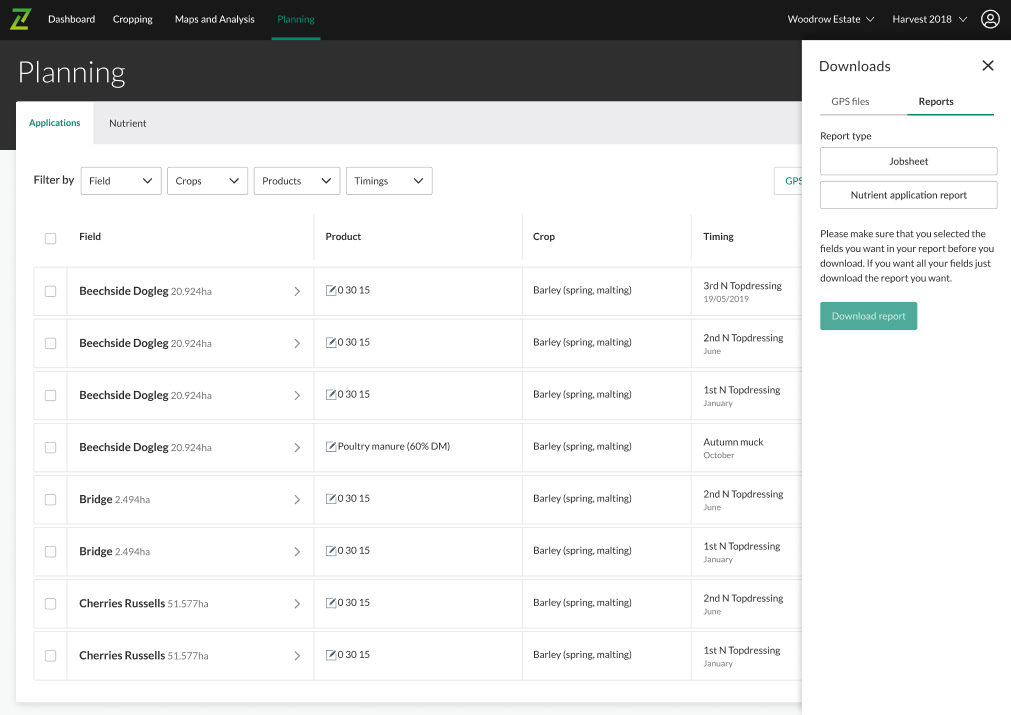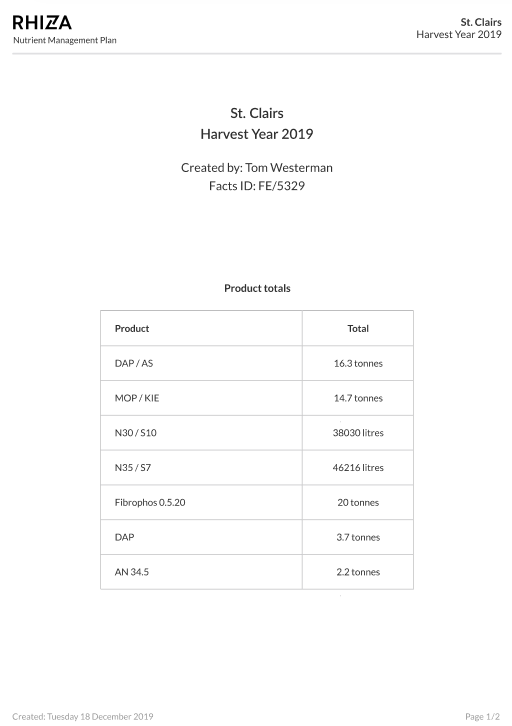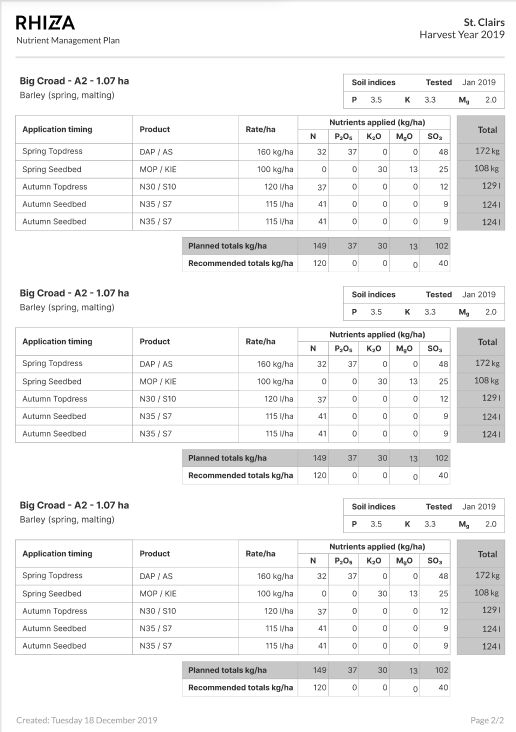From today you can now use both chlorophyll (GCVI) and soil brightness (SOB) imagery to create variable plans for both seed and fertiliser.
GCVI imagery estimates the leaf chlorophyll content by measuring the green light spectrum. It is more sensitive to chlorophyll concentration than NDVI, sensing crop nitrogen levels to a greater degree, while identifying crop stress and senescence earlier. This makes GCVI particularly useful for late season variable rate applications.
SOB imagery provides an assessment of soil variation by sensing the reflectance of bare soil. Soil variation defined by texture, organic matter and moisture can all be detected by SOB imagery. Where crop establishment and yield variation are impacted by variation in these soil properties, seed rates can be adjusted and optimised for each soil type sensed in the SOB image, improving establishment, canopy management and yield.
Plan with intelligence for harvest desiccation and autumn drilling:
For a step-by-step guide and video on how to create a plan, follow this link.





